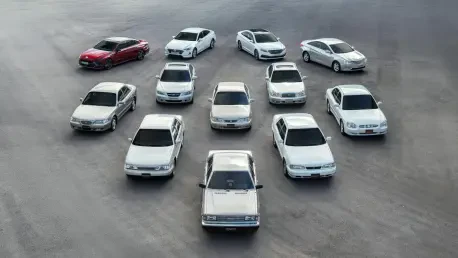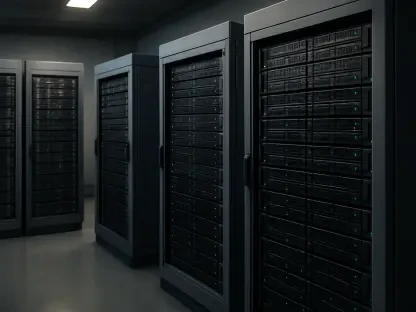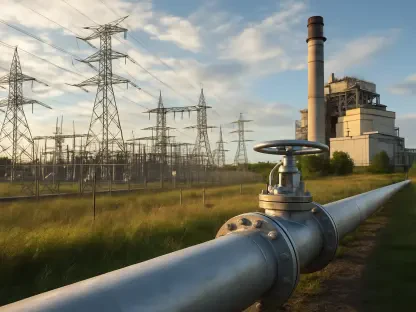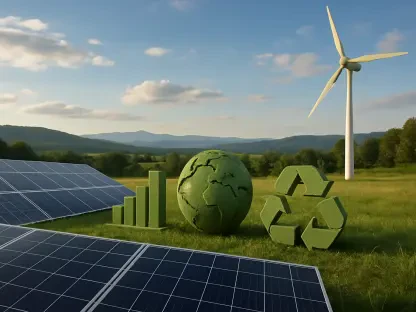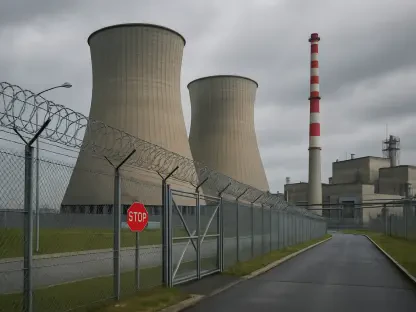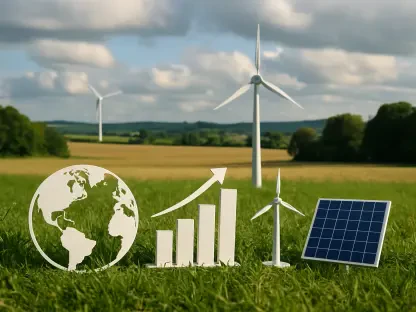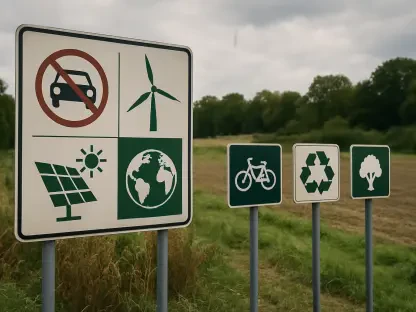Introduction
Imagine a world where the rumble of diesel engines on highways is replaced by the quiet hum of zero-emission vehicles, cutting through the air without a trace of carbon footprint, a vision that is no longer a distant dream but a pressing necessity. As the global road transport sector faces mounting pressure to combat climate change, the urgency to transition to sustainable practices by mid-century has never been clearer. With commercial transport accounting for a significant share of greenhouse gas emissions, this shift is critical.
The purpose of this FAQ is to address key questions surrounding the decarbonization of road transport, offering insights into challenges, strategies, and solutions. Readers can expect a deep dive into the current state of the industry, financial and infrastructural hurdles, and innovative tools designed to pave the way toward carbon neutrality. By exploring these topics, the aim is to provide clarity and actionable guidance for stakeholders navigating this complex transformation.
This content spans global perspectives, focusing on shared goals and regional differences, while highlighting practical steps and supportive policies needed for success. Whether you’re a logistics operator, policymaker, or concerned citizen, the information here seeks to illuminate the path to a sustainable future in road transport.
Key Questions or Topics
What Is the Current Commitment to Zero-Emission Road Transport?
The road transport industry has shown a firm resolve to achieve carbon neutrality by 2050, aligning with global climate targets. This commitment is driven by a collective understanding of the sector’s environmental impact, particularly in commercial freight, which contributes heavily to emissions. Industry leaders and operators recognize that decarbonization is not just a regulatory mandate but a vital step for long-term sustainability.
A significant push comes from frameworks like comprehensive decarbonization plans that unite stakeholders under science-based strategies. These initiatives emphasize the adoption of efficiency measures and investments in alternative fuels as immediate actions. However, while the intent is strong, translating this ambition into reality remains a daunting task due to practical constraints faced by many in the field.
Surveys conducted across regions such as Europe, Central Asia, and beyond reveal that a vast majority of operators, especially small and medium-sized enterprises, are on board with the vision. Despite this, concerns linger over the feasibility of meeting timelines without compromising business operations, pointing to a gap between aspiration and execution that must be bridged.
What Are the Main Challenges in Adopting Zero-Emission Vehicles?
Transitioning to zero-emission vehicles presents a host of challenges, primarily rooted in economic and logistical barriers. High upfront costs for acquiring new vehicles and the expense of alternative energy sources pose significant hurdles, especially for smaller operators with limited budgets. These financial strains often deter swift adoption despite long-term environmental benefits.
Beyond costs, inadequate infrastructure stands as a critical obstacle. The lack of widespread charging stations or refueling points for alternative fuels like hydrogen limits the operational range and efficiency of zero-emission fleets. This gap in infrastructure creates a bottleneck, slowing down the pace at which the industry can shift away from traditional diesel-powered vehicles.
Additionally, complex regulatory frameworks add another layer of difficulty. Navigating varying policies across regions, coupled with mechanisms like emissions trading systems, often burdens operators with compliance costs and administrative challenges. Addressing these issues requires coordinated efforts to simplify regulations and enhance access to necessary resources.
How Can Costs Be Managed During the Transition to Zero-Emission Transport?
Managing costs during the shift to zero-emission transport is a top priority for operators facing tight margins. One approach involves leveraging innovative tools that analyze energy consumption and emissions to optimize operations. By incorporating data on driving habits and vehicle specifications, these tools help identify cost-effective pathways for reducing carbon output without heavy financial outlays.
Another strategy focuses on phased investments in technology and fuels. Rather than an immediate overhaul, gradual integration of zero-emission vehicles and alternative energy sources can spread costs over time. This method allows businesses to adapt without risking financial instability, ensuring that sustainability does not come at the expense of economic viability.
Support from policymakers also plays a crucial role. Incentives such as subsidies, tax breaks, or grants for adopting green technologies can alleviate the burden on operators. Evidence suggests that regions with robust support systems see higher uptake of sustainable practices, underscoring the importance of government-industry collaboration in balancing environmental and fiscal goals.
What Role Does Infrastructure Play in Achieving Zero-Emission Goals?
Infrastructure is the backbone of any successful transition to zero-emission road transport, yet its current state falls short of industry needs. The availability of electricity grids, charging networks, and refueling stations for alternative fuels determines how effectively zero-emission vehicles can operate on a large scale. Without this foundation, even the most advanced technologies remain underutilized.
Expanding infrastructure requires substantial investment and planning, often involving public-private partnerships to share the load. For instance, strategic placement of charging points along major freight corridors can significantly boost the practicality of electric trucks. Such targeted efforts address immediate operational challenges while laying the groundwork for broader adoption.
Moreover, integrating smart technologies into infrastructure development can enhance efficiency. Real-time data on energy availability and vehicle needs can streamline usage, reducing downtime for fleets. As infrastructure grows, it becomes a catalyst for change, enabling operators to confidently invest in zero-emission solutions knowing that support systems are in place.
What Tools and Strategies Support Decarbonization Efforts?
Several cutting-edge tools have emerged to guide the road transport sector toward decarbonization with precision. Models that calculate energy use, emissions, and costs based on real-world data allow operators to make informed decisions about fleet management. These resources factor in variables like vehicle type and driver behavior, offering tailored recommendations for reducing environmental impact.
Roadmap-building tools are equally vital, assisting governments and large corporations in designing data-driven decarbonization plans. These strategies not only target carbon neutrality by 2050 but also monitor associated expenses to ensure affordability. Such frameworks are being adapted for various regions, reflecting a commitment to global scalability in tackling emissions.
On the operational side, strategies like eco-driving training and the use of alternative fuels are gaining traction. These practical steps, supported by industry consensus, demonstrate measurable reductions in carbon output. The combination of technological tools and actionable tactics creates a robust framework for navigating the complexities of sustainable transformation.
Summary or Recap
This discussion highlights the road transport industry’s steadfast dedication to reaching zero-emission goals by 2050, despite facing significant challenges. Key obstacles include high costs, insufficient infrastructure, and regulatory complexities, which slow the adoption of sustainable technologies. However, strategies like phased investments, policy incentives, and innovative tools offer viable solutions to balance environmental and economic priorities.
The importance of infrastructure development and collaborative efforts between stakeholders stands out as a critical factor for success. Tools that analyze data and build decarbonization roadmaps provide structured guidance, ensuring that progress is both measurable and practical. These insights underscore the need for a unified approach to overcome barriers and achieve long-term sustainability.
For those seeking deeper exploration, resources on alternative fuel technologies and regional decarbonization plans are recommended. Engaging with industry reports and participating in stakeholder forums can further enhance understanding of this evolving landscape. The collective journey toward zero-emission transport remains a dynamic challenge requiring ongoing attention and adaptation.
Conclusion or Final Thoughts
Looking back, the dialogue around decarbonizing road transport revealed a shared determination among operators and stakeholders to address climate challenges head-on, even as financial and structural hurdles persisted. The insights gathered from industry discussions painted a picture of a sector eager to transform, yet in need of practical support to turn vision into reality.
Moving forward, actionable steps such as advocating for stronger policy incentives and investing in localized infrastructure projects can accelerate progress. Exploring partnerships with technology providers to access cost-effective solutions also emerged as a promising avenue. These efforts, if prioritized, could redefine the future of commercial freight.
Reflecting on this topic, consider how individual or organizational actions might contribute to broader sustainability goals. Whether through adopting efficiency practices or supporting green policies, every step taken today shapes the environmental legacy of tomorrow.
